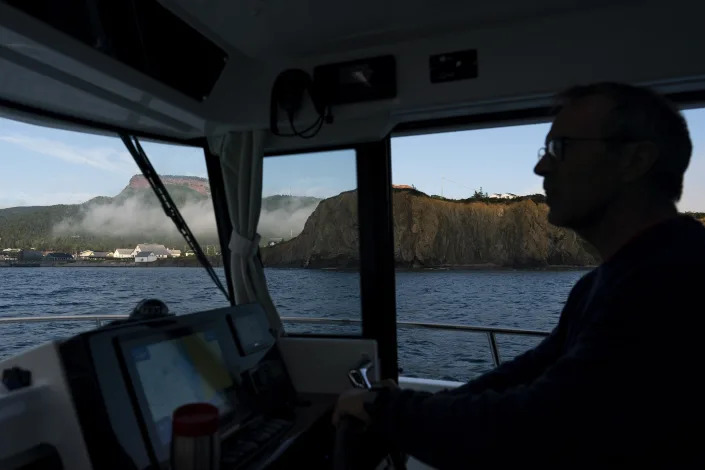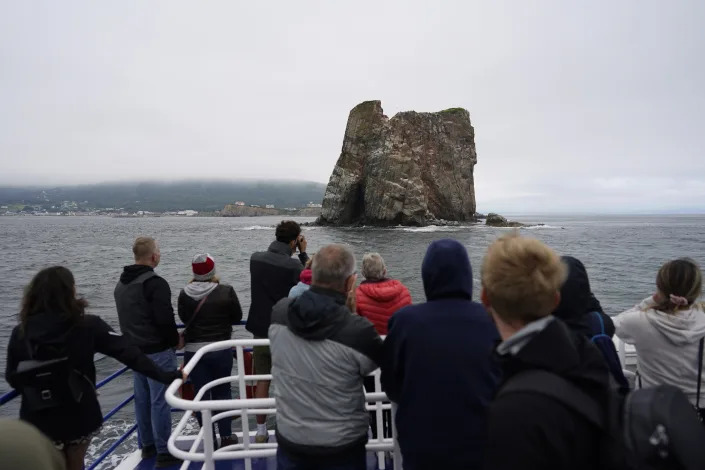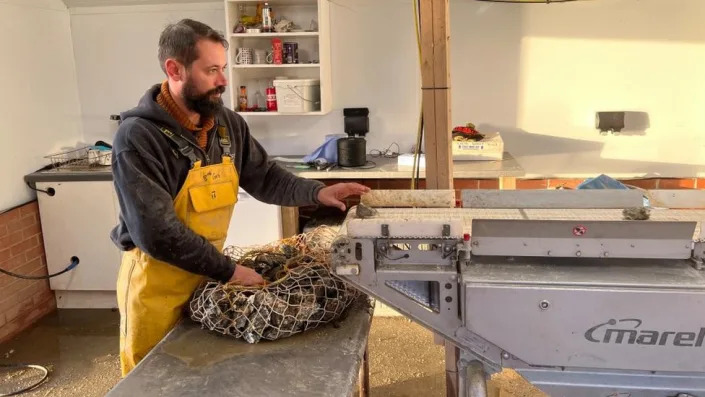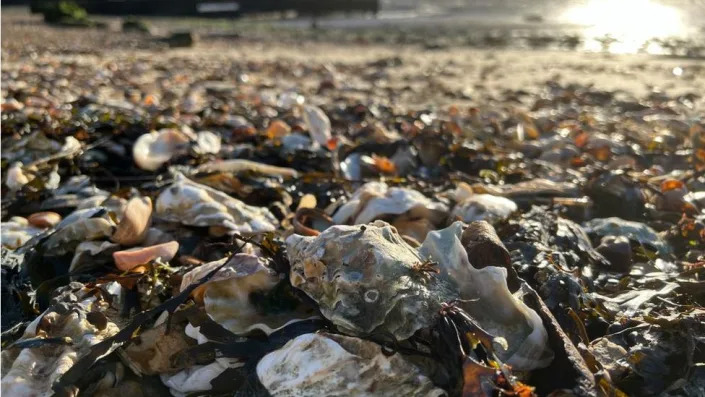A ravaged Quebec coast fights climate change by retreating


1 / 17
APTOPIX Climate Change Coastal ErosionJoel Berthelot pilots his boat along the coast of Perce, Quebec, Canada, just after sunrise, Tuesday, Sept. 13, 2022. Against the ravaging seas, Quebec's coastal communities have learned through experience that the way to advance against climate change is to retreat. (AP Photo/Carolyn Kaster)
CALVIN WOODWARD, LYNN BERRY, CHRISTINA LARSON and CAROLYN KASTER
Tue, December 20, 2022
PERCE, Quebec (AP) — Against the ravaging seas, Quebec's coastal communities have learned through bitter experience that the way to advance against climate change is to retreat.
Over the past decade, civilization has been pulled back from the water’s edge where possible along the eastern stretch of the Gaspe Peninsula where coastline is particularly vulnerable to erosion. Defenses erected against the sea ages ago have been dismantled, rock by rock, concrete chunk by chunk.
Forillon National Park, nearly 100 kilometers (60 miles) from Perce, removed a road that the ocean turned into heaving chunks year after year as winters warmed and the shore's protective sea ice vanished.
In Perce, a town of several thousand that swells in summer, a manmade beach was “nourished” with pebbles and given to nature to sculpt. After storms wrecked the old seaside boardwalk, a new one was built farther from the water, without the concrete wall that had only added to storm wave fury.
When you try to wall off the sea, communities here learned, the sea prevails. Less destruction happens when waves have less to destroy.
The idea is to “move with the sea, not against it,” said Marie-Dominique Nadeau-Girard, services manager at the Quebec park that encompasses the world renowned seabird sanctuary of Bonaventure Island and the enormous Perce Rock, a natural marvel and cultural touchstone that dominates the panorama.
“We have to work with the elements,” she said from offices of Parc national de l’lle-Bonaventure-et-du-Rocher-Perce. To fight nature is to realize “we’re not going to win.”
So, too, at Forillon, where park ecologist Daniel Sigouin says: "We decided to retreat, and let nature evolve naturally.”
Not every location in the world where climate change accelerates coastal erosion can roll with the punches like this. Condos crowding U.S. beachfronts aren't going anywhere unless or until such seaside living becomes unsustainable.
But the Gaspe Peninsula's approach is a test case for far-flung places where strategic capitulation to nature is possible, even with historic human settlements in the mix.
Along the peninsula’s shores, once-dependable buffers of coastal ice in deep winter have been largely absent for a quarter century.
In Perce, the ritual of trekking across ice floes to Bonaventure, 3 kilometers (almost 2 miles) from the town, hasn’t been possible for several decades. It is probable, said meteorologist George Karaganis of the Canadian Ice Service, that “20 or 30 years on, those people who walked to Bonaventure Island will all be gone — people will never remember walking to Bonaventure.”
The story of modern Canadian winters, indeed all seasons, is one of disruption attributed to warming temperatures and rising seas.
“Historical warming has led to changes in rain and snow, rivers and lakes, ice, and coastal zones,” said the Canadian government’s 2019 climate report, “and these changes are challenging our sense of what a ‘normal’ climate is.”
At Forillon, Sigouin is author of a recent report on a seven-year project to adapt the park to climate change. “In winter, there was always ice cover from December to late March," he said. "That ice cover was protecting the coast from coastal erosion.
"But as temperatures are getting higher and higher, in that area, there’s almost no ice anymore. As ice is less and less present, we have seen more and more the effect of coastal erosion.”
In the project at Forillon to yield to the coast's natural rhythms, officials also were mindful of preserving — and honoring — the human imprint.
The peninsula is lightly populated and has much less wealth than the maritime playgrounds of the U.S. Atlantic coast. But it’s central in the founding of New France — French explorer Jacques Cartier made landfall in the early 1500s and colonists settled coastal hamlets in the late 1700s.
The park is where the Irish Monument stands — recently relocated farther inIand — in memory of the 120 to 150 lives lost when the Carricks, an Irish ship bound for the St. Lawrence River, ran aground off the coast of Cap-des-Rosiers on April 28, 1847.
For all of that history, the Forillon climate project still was able to eliminate infrastructure along 80% of the coastline. In addition to removing a road, relocating the monument and rehabilitating natural habitats, the park took away stacks of large rocks known as riprap — a common defense for seaside roads and facilities that has come to be seen as part of the problem.
Then there is the Perce Rock, immortalized by explorers back to the 1500s and artists and poets ever since. It stands as testament to the natural processes of erosion even without climate change.
The massive formation sheds hundreds of tons each year. Where once there were at least three arches, now there is only one, and some distant day “the pierced rock” itself will disappear.
The picturesque town, though, is grappling with more immediate consequences of global warming.
In Perce, violent weather in 2016 convinced officials that the old ways of holding back the sea would not do. By then it had become apparent rigid structures such as the town’s damaged seawall often made the risks of destruction worse.
Rather than absorbing wave energy, seawalls and riprap can create backwash that collides with incoming waves, engineers realized, setting off supercharged turbulence that chews away at shoreline protection.
In Perce’s areas where rigid protections had been built over generations, the width of beaches decreased by about 70%.
In 2017, with such obstacles largely gone, 7,500 truckloads of coarse pebbles, like ones found naturally on the region’s beaches, were deposited at the town’s South Cove and left for the sea to arrange in a gentle slope.
Officials project that the cove’s rehabilitation will last 40 to 50 years. But who really knows?
“Beyond the next few decades, the largest uncertainty about the magnitude of future climate change is rooted in uncertainty about human behaviour,” says the 2019 Canadian study — namely “whether the world will follow a pathway of low, medium or high emissions.
“Until climate is stabilized,” it says, “there will not be a new ‘normal’ climate.”
___
Larson reported from Washington.

















.png)